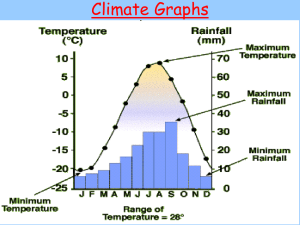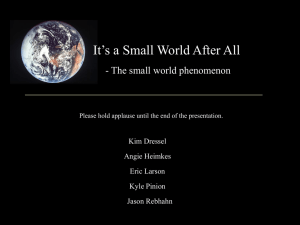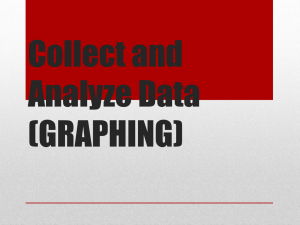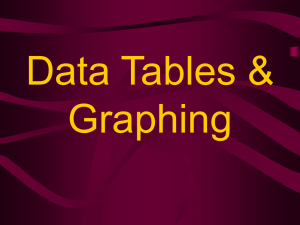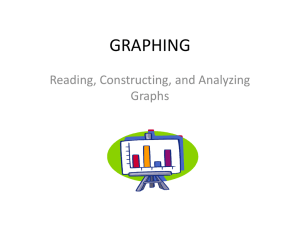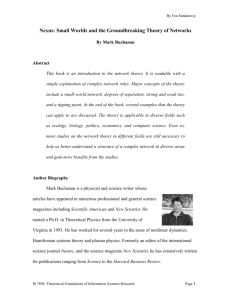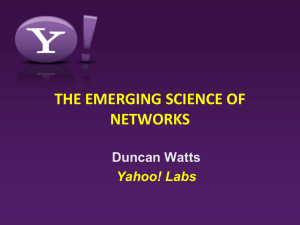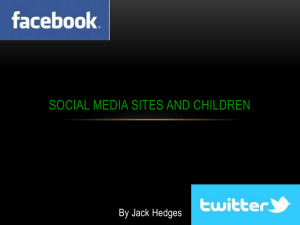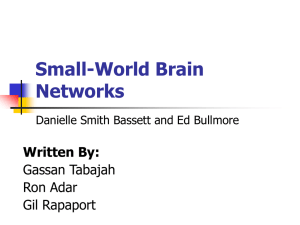Lecture slides
advertisement
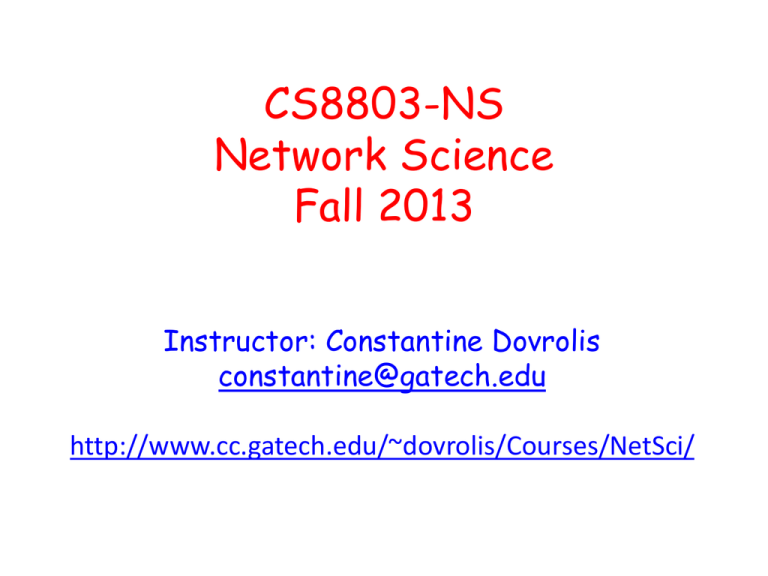
CS8803-NS Network Science Fall 2013 Instructor: Constantine Dovrolis constantine@gatech.edu http://www.cc.gatech.edu/~dovrolis/Courses/NetSci/ Disclaimers The following slides include only the figures or videos that we use in class; they do not include detailed explanations, derivations or descriptions covered in class. Many of the following figures are copied from open sources at the Web. I do not claim any intellectual property for the following material. Outline • As a reference point: – Poisson random graphs – Regular graphs • Common properties of real-world networks – – – – – Size of largest connected component Small-world property Heavy-tailed degree distribution Hierarchical organization Network motifs • Application paper: Small-world networks and functional connectivity in Azheimer’s disease • Discuss course projects – project proposals due in a week • Collect email addresses • Surprise “visitor” will talk about Sociology and NetSci Reference point-1: ER random graphs • G(n,m) and G(n,p) models (see lecture notes for derivations) Emergence of giant connected component in G(n,p) as p increases http://networkx.lanl.gov/archive/networkx-1.1/examples/drawing/giant_component.html Emergence of giant component • See lecture notes for derivation of the following Emergence of giant connected component in G(n,p) as p increases • https://www.youtube.com/watch?v=mpe 44sTSoF8 Reference point-2: Regular graphs • Ring lattice with k connections to nearest neighbors (see lecture notes) http://www.learner.org/courses/mathilluminated/units/11/textbook/04.php Outline • As a reference point: – Poisson random graphs – Regular graphs • Common properties of real-world networks – – – – – Size of largest connected component Small-world property Heavy-tailed degree distribution Hierarchical organization Network motifs • Application paper: Small-world networks and functional connectivity in Azheimer’s disease • Discuss course projects – project proposals due in a week • Collect email addresses • Surprise “visitor” will talk about Sociology and NetSci Outline • As a reference point: – Poisson random graphs – Regular graphs • Common properties of real-world networks – – – – – Size of largest connected component Small-world property Heavy-tailed degree distribution Hierarchical organization Network motifs • Application paper: Small-world networks and functional connectivity in Azheimer’s disease • Discuss course projects – project proposals due in a week • Collect email addresses • Surprise “visitor” will talk about Sociology and NetSci http://www.nature.com/nature/journal/v406/n6794/images/406378aa.2.jpg More about power-laws (see derivations in class notes) • Power-laws are everywhere (“more normal than the Normal distribution”) • When is the m’th moment of a powerlaw distribution finite? • How to detect a power-law distribution? • How to estimate the exponent of a power-law distribution? Outline • As a reference point: – Poisson random graphs – Regular graphs • Common properties of real-world networks – – – – – Size of largest connected component Small-world property Heavy-tailed degree distribution Hierarchical organization Network motifs • Application paper: Small-world networks and functional connectivity in Azheimer’s disease • Discuss course projects – project proposals due in a week • Collect email addresses • Surprise “visitor” will talk about Sociology and NetSci Bow-tie structure of directed nets http://johncarlosbaez.wordpress.com/2011/10/03/the-network-of-global-corporate-control/ Outline • As a reference point: – Poisson random graphs – Regular graphs • Common properties of real-world networks – – – – – Size of largest connected component Small-world property Heavy-tailed degree distribution Hierarchical organization Network motifs • Application paper: Small-world networks and functional connectivity in Azheimer’s disease • Discuss course projects – project proposals due in a week • Collect email addresses • Surprise “visitor” will talk about Sociology and NetSci http://www.nature.com/nrg/journal/v5/n2/box/nrg1272_BX2.html How to control β and γ? • The paper presents a stochastic model to do so • But there are many other models that can do the same • What is the main “ingredient” to get a power-law degree distribution? • What is the main “ingredient” to get a hierarchical structure? Outline • As a reference point: – Poisson random graphs – Regular graphs • Common properties of real-world networks – – – – – Size of largest connected component Small-world property Heavy-tailed degree distribution Hierarchical organization Network motifs • Application paper: Small-world networks and functional connectivity in Azheimer’s disease • Discuss course projects – project proposals due in a week • Collect email addresses • Surprise “visitor” will talk about Sociology and NetSci Outline • As a reference point: – Poisson random graphs – Regular graphs • Common properties of real-world networks – – – – – Size of largest connected component Small-world property Heavy-tailed degree distribution Hierarchical organization Network motifs • Application paper: Small-world networks and functional connectivity in Azheimer’s disease • Discuss course projects – project proposals due in a week • Collect email addresses • Surprise “visitor” will talk about Sociology and NetSci http://en.wikipedia.org/wiki/File:EEG_mit_32_Electroden.jpg http://en.wikipedia.org/wiki/File:Spike-waves.png http://www.sciencedirect.com/science/article/pii/S1388245704000112 Outline • As a reference point: – Poisson random graphs – Regular graphs • Common properties of real-world networks – – – – – Size of largest connected component Small-world property Heavy-tailed degree distribution Hierarchical organization Network motifs • Application paper: Small-world networks and functional connectivity in Azheimer’s disease • Discuss course projects – project proposals due in a week • Collect email addresses • Surprise “visitor” will talk about Sociology and NetSci Course projects plz start with the following questions • (and answer them in your project proposal) Do you want to do a research-oriented project? • What is the nature of the involved work? • Do you want to do something domain-specific or general? • Which topic of the course syllabus is your project most relevant to? • Solo or group project? • Some possible project types: – Ok to work on something that relates to your research area – Not ok to submit something you have already done – Ok to do something that has no clear research potential (e.g., to reproduce the results of a published paper or to develop a tool that can be used in netsci research) – Data collection, data analysis, simulation, math analysis, a combination of these? – E.g., related only to computer networks? Social nets? Brain nets? – Or something general (e.g., an algorithm for community detection in general nets) – Have you read 1-2 papers about that topic? – Which are the strengths or complementary backgrounds in your group? – Reproduce the main results of a research paper with a different dataset(s) – Model a system that you understand well as a network and formulate some key questions about that system as network-related questions – Develop a simulator for a network model (ideally involving some sort of dynamics on the network) and investigate some concrete questions computationally – Develop an actual system (e.g., Web application) that will allow us to collect data about a network process in the background (e.g., a social game of some sort) – Prove analytically a property of a network model that has been shown only numerically in the published literature Duncan Watts (from the small world ‘98 paper) will talk to us about computational social science http://www.youtube.com/watch?v=D9XF0QO zWM0

